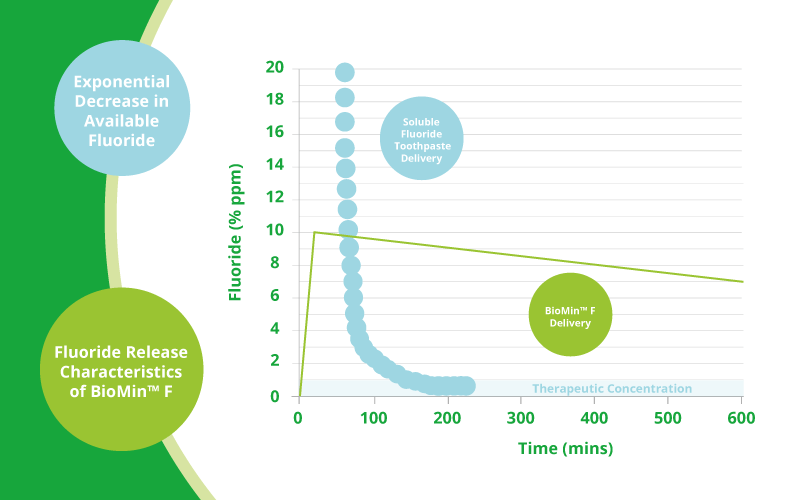What makes the best fluoride toothpaste? What is the best fluoride toothpaste?
Tooth decay is the most prevalent disease in the western world. The general treatment of decay is washing with a fluoridated toothpaste. But is all fluoride toothpaste the same? What makes the best fluoride toothpaste? What is the best fluoride toothpaste?
A quick troll of the internet will highlight many articles claiming they have selected the best toothpaste for their readers. Dig a little deeper and you will notice that many of those reviews are based on which product is the highest seller on Amazon, or whichever website pays the most affiliate payments. As such they are unable to answer the question of “What makes the best fluoride toothpaste? What is the best fluoride toothpaste?”.
Do all toothpaste have the same ingredients?
In 2014 Australian consumer review magazine: Choice presented an article “Toothpaste: What’s the difference”. Their findings were that most toothpastes “pretty much contain the same ingredients”, and many of the claims made by manufacturers were marketing terms that delivered questionable results at best. It is suggested that since all toothpastes contain the same basic ingredients you could opt for the cheapest tube in the pharmacy (though from a reputable brand). The new bioglass technology from BioMin changes the game, and proves not all toothpaste are the same.
How does fluoride work?
In simple terms, fluoride delivers two benefits. Firstly, it helps increase the speed of the tooth’s natural repair process called remineralisation (redepositing of tooth mineral on to the enamel). The second benefit is stronger teeth. Remineralisation in the presence of fluoride creates a mineral called fluorapatite (also found in sharks’ teeth) which repairs the enamel and is 10 times more acid resistant than the tooth’s natural enamel. Making the toothless prone to decay.
Government legislation limits the concentration of fluoride in toothpaste. Australia as with many other countries limits fluoride in adult toothpaste to 1,500 parts per million (ppm). High dose and specialist toothpastes are available at your pharmacy and dentist. Most regular adult brands have around 1,400 to 1,480 ppm fluoride when packed.
Fluoride rapidly disappears
Only very low concentrations of fluoride are required to drive the remineralisation process.[i] So, why does adult toothpaste have such high levels? After washing teeth the level of fluoride drops very rapidly, following rinsing and salivary flow. With therapeutic levels being maintained for only about 2 hours. High dose 5,000 ppm fluoride toothpastes available behind the counter at the pharmacy can extend the therapeutically available fluoride out to around 4 hours.[ii]
Fluoride needs to be slowly released.
Professor Ten Cate one of the world’s foremost experts in caries (decay) suggests that “For treatments to be effective over periods longer than the brushing and the following salivary clearance, fluoride needs to be deposited and slowly released”[iii]. Professor Cate’s correspond align to a clinical study undertaken in the UK in the 1970’s[iv], where a group of children with very poor teeth had a device placed on their teeth that slowly released fluoride. The results suggested a 67% decline in new carious lesions (decay) over a 2-year period. If we ask the question what makes the best fluoride toothpaste? The answer could possibly be, one that releases fluoride slowly on an ongoing basis, which effectively extends the period that fluoride is therapeutically available.
Manufacturers and researchers alike have for decades been trying to produce a toothpaste formula which can control the release of fluoride. This, however, has been an elusive proposition, with most manufacturers using a readily soluble fluoride salt such as sodium fluoride, sodium monofluorophosphate or in some cases strontium fluoride (Tin II Fluoride).
A team of researchers at Queen Mary University of London headed by Professor Hill investigated modifying an existing toothpaste ingredient with the trade name NovaMin®. NovaMin® is a bioactive glass that bonds to the tooth when washing and delivers a slow release mechanism for its constituent ingredients, namely calcium and phosphate. Following a decade’s research and 7 PhDs, a new bioglass was developed which could in addition to delivering calcium and phosphate also deliver fluoride in a controlled slow release manner to the tooth’s surface. BioMin F was born.
Breakthrough 24-hour fluoride availability
BioMin F solves the problem of rapid fluoride loss, by controlling its release. This control can deliver therapeutic fluoride availability up to 24 hours per day with twice per day washing. This means BioMin can make therapeutic levels of fluoride available for longer than regular or 5,000 ppm fluoride products.
The continual availability of fluoride in the presence of calcium and phosphate (contained in the bioglass) helps deliver BioMin F class leading remineralisation rates. University testing shows BioMin F has higher remineralisation (repair) rates than even specialised dental products. Clinical studies show BioMin F having significantly higher remineralisation rates than very high dose (9,000 ppm, 17 times more) toothpastes.[vi]
If product performance is the indicator for “What is the best fluoride toothpaste”, then the answer is most probably BioMin F.
[i] Gillam Et al Dentine Hypersensitivity advances in Diagnosis Management and Treatment.
[ii] Gillam Et al Dentine Hypersensitivity advances in Diagnosis Management and Treatment.
[iii] ten Cate J. Review on fluoride, with special emphasis on calcium fluoride mechanisms in caries prevention. Eur J Oral Sci. 1997;105:461–5.
[iv] Toumba KJ and Curzon MEJ. A Clinical trial of a slow- releasing fluoride device in children. Caries Res (2005) 39:195-200.
Professor Jack Toumba, Division of Child Dental Health, Leeds Dental Institute, University of Leeds
[v] NovaMin® is a trademark owned by GlaxoSmithKlein plc.
[vi] Bakry AS, et al, A Novel Fluoride Containing Bioactive Glass Paste is Capable of Re-Mineralizing Early Caries Lesions. Materials. 2018; 11(9):1636.


